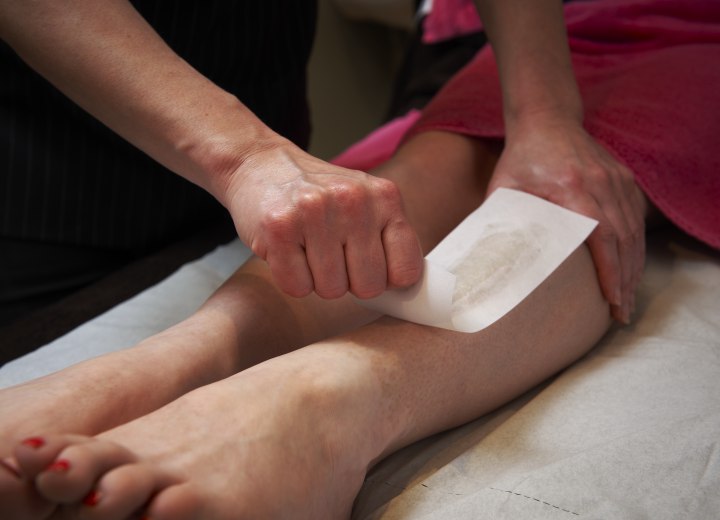
Previous page
Use an astringent on the area to be waxed before applying the wax. The body's natural oils serve the purpose of lubricating skin and keeping the body hair healthy. However, oil trapped in body hair can mean that the wax cannot adequately hold onto the hair for removal. Using an astringent (alcohol works well) to remove the oil and dry out the hair will make waxing more productive.
Use Talc on Sensitive Skin areas. When waxing sensitive areas (specifically bikini, perineum, and anal regions) here's a good tip to make things less painful. After cleaning the area, and using an astringent to remove any residual oils from the hair/skin, use a light dusting of talcum powder on those tender areas to keep the wax from sticking too firmly to the skin. Apply the powder with a puff to make sure you avoid over-powdering.
Don't Try to Do Too Much at Once. One mistake some people make is trying to do large areas at once. The idea that motivates this action is that the fewer passes you have to make the less often you have to feel the pain. However, it is often impossible to remove long strips of fabric with the quick, even motion you need. The end result of trying to wax too large an area is often that you end up with more pain, and have to repeat the process because you fail to remove the hair.
Trim overly long hair before waxing. If the hair to be removed is too long, it can cause uneven results in the waxing process because the hairs become matted and are not evenly covered by the wax. This can also make the process more painful as the tension applied to the hairs is not uniform. Trim any hairs that are more than 1/2 inch in length (particularly in the pubic area) prior to waxing to ensure even coverage and tension.
To get a clean line, comb hair away from the line. In some areas the intention is to clean up the "line" around the area (i.e. in the pubic area). By combing the hair away from the edges before applying the wax you can ensure a more precise application of the wax and a clean, even line when you're finished.
Remember to hold the skin taut when removing the wax strip. In order to make the waxing process less painful, it is important that you have even tension when removing the waxed strip. Hold the skin taut when you remove the strip to avoid a "rippling" effect in the skin and uneven pulling of the hairs.
Pull the fabric strip against the direction of hair growth. The way waxing works is that it removes the hair by pulling it out by its roots. When you remove a waxed strip, always pull in the direction opposite of the hair's growth to make sure that the hairs are pulled evenly. Removing the strip in the direction the hair grows makes it likely that the hair will slip free of the wax as it is pulled along the hair shaft.
Pull the fabric strip from the skin quickly. The fabric strip used in wax hair removal should be pulled with quick, even strokes. This is not a situation where you want to go slowly.
By using the above tips, you will see better results from your waxing endeavors. You will also find that the experience is less painful. Remember, a sure and steady hand will hurt much less, so take the time to prepare and plan your actions.
©hairfinder.com
See also:
Abnormal hair growth in women
Removing unwanted hair




































